Tom's Hardware Verdict
As a budget option, the roughly $200 B850I Lightning is a worthwhile lower-cost board in the AMD Mini-ITX space. But if you need Wi-Fi 7 and USB4 with a Ryzen 9000 CPU, you’ll have to spend an additional $100 or more.
Pros
- +
Good price
- +
Capable power delivery
- +
Good all-around performance
- +
Worthy update over B650I Lightning
Cons
- -
No USB4 unless you're using an 8000G CPU
- -
‘Only’ Wi-Fi 6E
- -
Last-gen audio solution
Why you can trust Tom's Hardware
The last time we reviewed a Mini-ITX board was about six months ago, and it featured the B650 chipset. Fast forward to today and we have AMD’s latest and greatest budget chipset on the test bench in the form of the ASRock B850I Lightning WiFi. This inexpensive offering (at least by today’s motherboard standards) gives you an updated aesthetic, enough USB ports for most people, capable power delivery, a solid audio solution, Wi-Fi 6E, and, of course, a PCIe 5.0-capable M.2 socket and PCIe slot. You can jam quite a bit into this small package.
But is it better than its similarly priced predecessor? Well, that depends on your needs and plans. Still, for $10 more (you can find the B650I Lightning for $199, sans rebate), the newer model has a better design, more robust power delivery, faster memory support, and upgrades to a PCIe 5.0 x16 slot…for whatever that’s worth (testing shows negligible differences vs. 4.0 x16 and even 4.0 x8/3.0 x16).
Our B850I Lightning's overall performance was good, often finishing above average or even first in some benchmarks. It proved itself a competent gamer and effortlessly handled productivity tasks, letting our upper mid-range Ryzen 9 9900X stretch its legs under our 3x140mm AIO. The Ryzen 9 9950 X would also fare well.
Below, we’ll examine the board's features and performance to see if it deserves a spot on our Best Motherboards list (it is an excellent value). But before we share test results and discuss details, we’ll list the specifications from ASRock’s website.
Specifications of the ASRock B850I Lightning WiFi
Socket | AM5 (LGA 1718) |
Chipset | B850 |
Form Factor | Mini-ITX |
Voltage Regulator | 12 Phase (10x 110A SPS MOSFETs for Vcore) |
Video Ports | (1) USB 3.2 Gen2 Type-C (DP 1.4) |
| Row 5 - Cell 0 | (1) HDMI (v2.1) |
USB Ports | (1) USB 3.2 Gen 2 (20 Gbps) Type-C |
| Row 7 - Cell 0 | (2) USB 3.2 Gen 2 (10 Gbps) |
| Row 8 - Cell 0 | (1) USB 3.2 Gen 1 (5 Gbps) |
| Row 9 - Cell 0 | (4) USB 2.0 (480 Mbps) |
Network Jacks | (1) 2.5 GbE |
Audio Jacks | (2) Analog + SPDIF |
Legacy Ports/Jacks | ✗ |
Other Ports/Jack | ✗ |
PCIe x16 | (1) v5.0 (x16) |
PCIe x8 | ✗ |
PCIe x4 | ✗ |
PCIe x1 | ✗ |
CrossFire/SLI | ✗ |
DIMM Slots | (4) DDR5-8200+(OC), 256GB Capacity |
M.2 Sockets | (1) PCIe 5.0 x4 (128 Gbps) / PCIe (up to 80mm) |
| Row 21 - Cell 0 | (1) PCIe 4.0 x4 (64 Gbps) / PCIe (up to 80mm) |
| Row 22 - Cell 0 | (Supports RAID 0/1/10) |
SATA Ports | (2) SATA3 6 Gbps (Supports RAID 0/1) |
USB Headers | (1) USB v3.2 Gen 1 (5 Gbps) Type-C |
| Row 25 - Cell 0 | (1) USB v3.2 Gen 1 (5 Gbps) |
| Row 26 - Cell 0 | (2) USB v2.0 (480 Mbps) |
Fan/Pump Headers | (3) 4-Pin (CPU, Chassis, AIO) |
RGB Headers | (2) aRGB Gen 2 (3-pin) |
Diagnostics Panel | ✗ |
Internal Button/Switch | ✗ |
SATA Controllers | ✗ |
Ethernet Controller(s) | (1) Killer E3100G (2.5 GbE) |
Wi-Fi / Bluetooth | Wi-Fi 6E - 160 MHz, 6 GHz, BT 5.2 |
USB Controllers | ✗ |
HD Audio Codec | Realtek ALC1220 |
DDL/DTS | ✗ / ✗ |
Warranty | 3 Years |
Inside the Box of the ASRock B850I Lightning WiFi
ASRock includes a few accessories to get you going. You get SATA cables (two), the Wi-Fi antenna, a thermistor cable, and two screws for the M.2 sockets. Not much to the accessories here, but not much is needed. I like the included thermistor, which you can utilize for thermal management.
Design of the Lightning WiFi
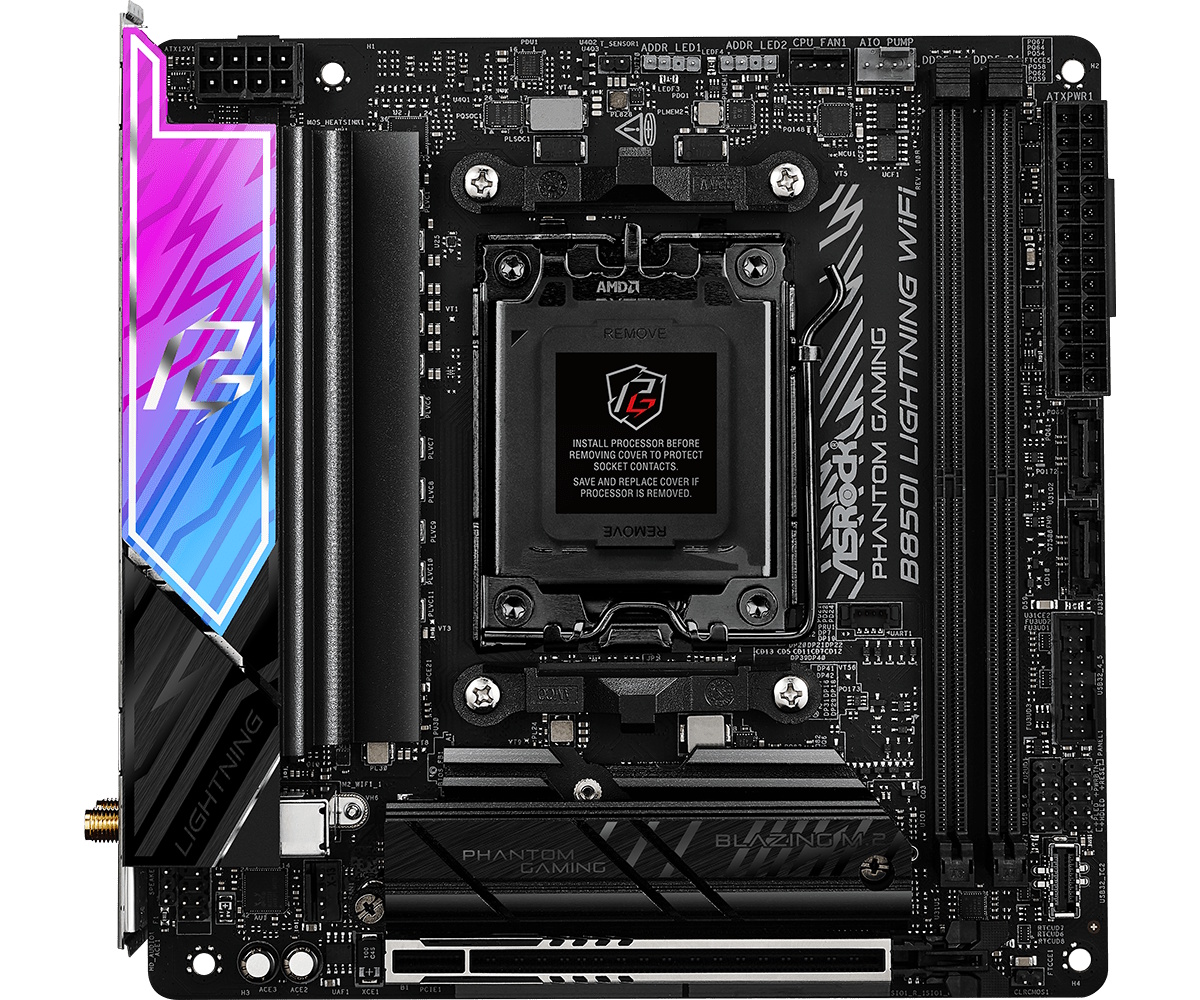
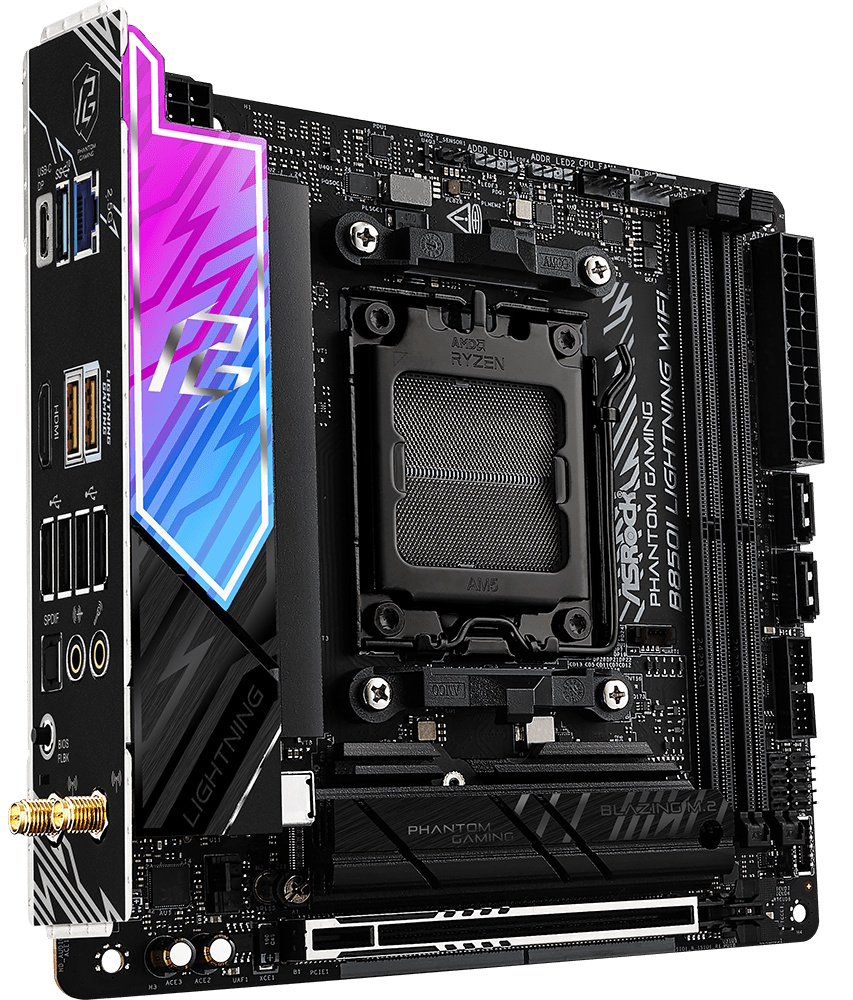
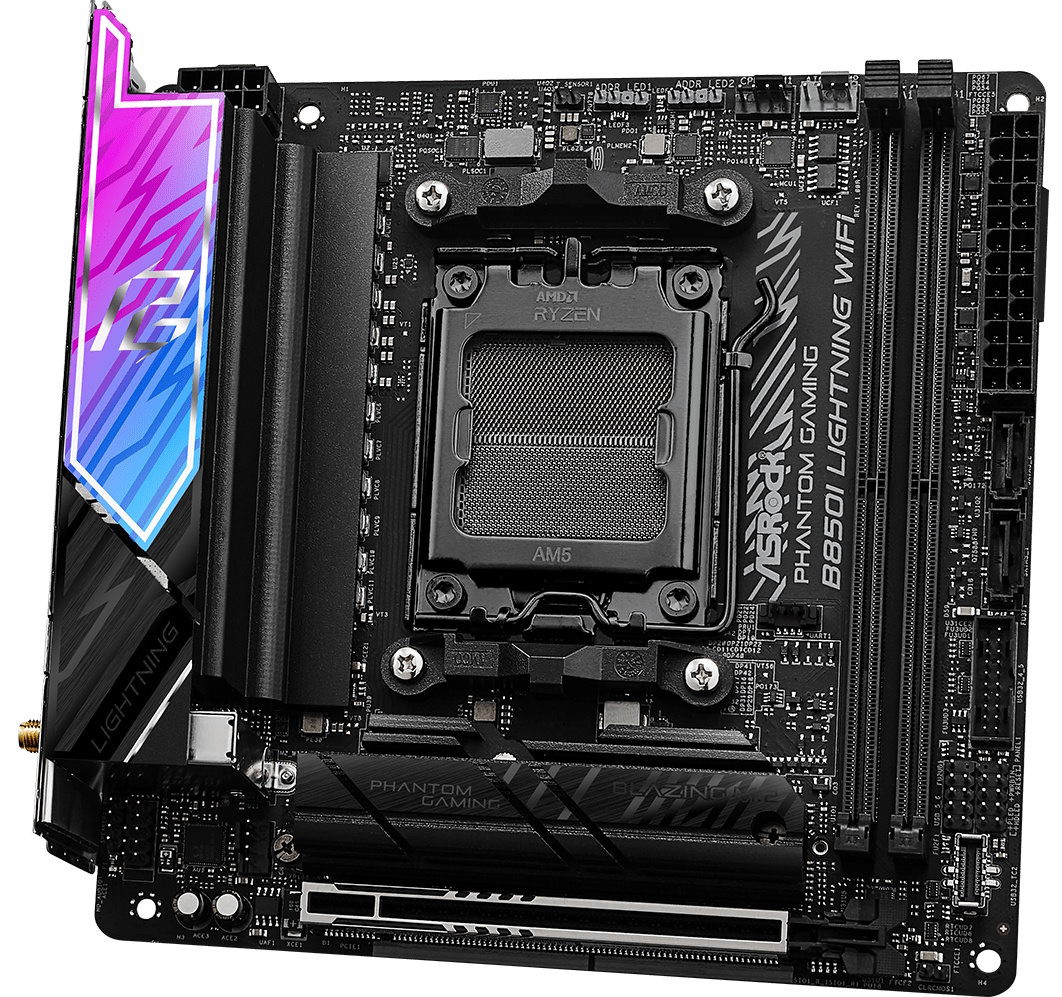
A Mini-ITX board doesn’t offer a lot of real estate for design, and it’s usually left for the VRM and M.2 heatsinks to catch your eye. ASRock decorates the VRM heatsink with a reflective metal that fades from purple to blue with the PG (Phantom Gaming) branding in the middle. Below is a black brushed aluminum finish with “Lighting” on it. The M.2 heatsink is simple, with more branding on the miter-cut cooler. The 8-layer PCB is matte black. Oh, you won’t find any integrated RGBs. But there are headers to connect your own. There’s not much to it, but the board will look good with most build themes.
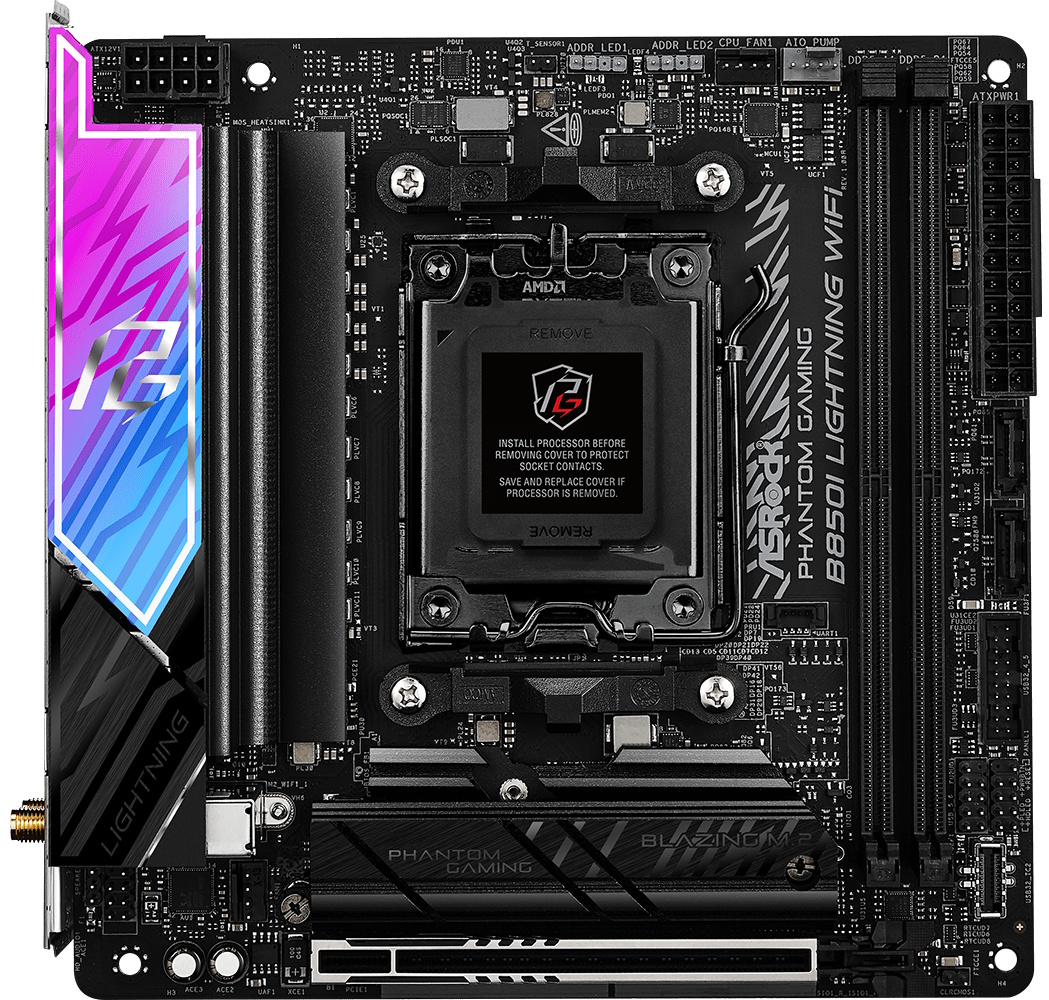
Starting in the upper-left corner, we see a single 8-pin EPS connector to power the processor. Sliding focus to the right, we run into the 2-pin thermistor header and two 3-pin ARGB headers. With the BIOS, you can use the additional data from the included thermistor to help with thermal management. The Polychrome RGB application controls the RGB headers.
Next are the first two (of three) 4-pin fan headers. All three output up to 3A/36W, which is plenty, especially in a Mini-ITX case where you can’t stuff a half-dozen fans inside (although we’re sure someone will find a way). The FAN-Tastic Tuning portion is inside the Phantom Gaming Tuning (AKA A-Tune) application, where you can tune each fan individually.
Get Tom's Hardware's best news and in-depth reviews, straight to your inbox.
The DRAM slots on the right lock in from the top, giving your fingers ample room to reach them. ASRock lists support up to DDR5-8200+(OC), which is plenty fast for the platform. We did have issues with our Klevv DDR5-8000 kit (it wasn’t stable for the 30-minute stress test), but the Teamgroup DDR5-7200 sticks got through it in Gear 2. The Klevv set wasn’t on the QVL list, so it wasn’t guaranteed to work (although similar Klevv DDR5-8000 kits were).
Along the right edge is the 24-pin ATX power connector, two SATA ports (supports RAID 0/1), 19-pin front panel USB 3.2 Gen1 (5 Gbps) header, USB 2.0 and front panel headers, and finally a USB 3.2 Gen 2 (10 Gbps) Type-C front panel connector.
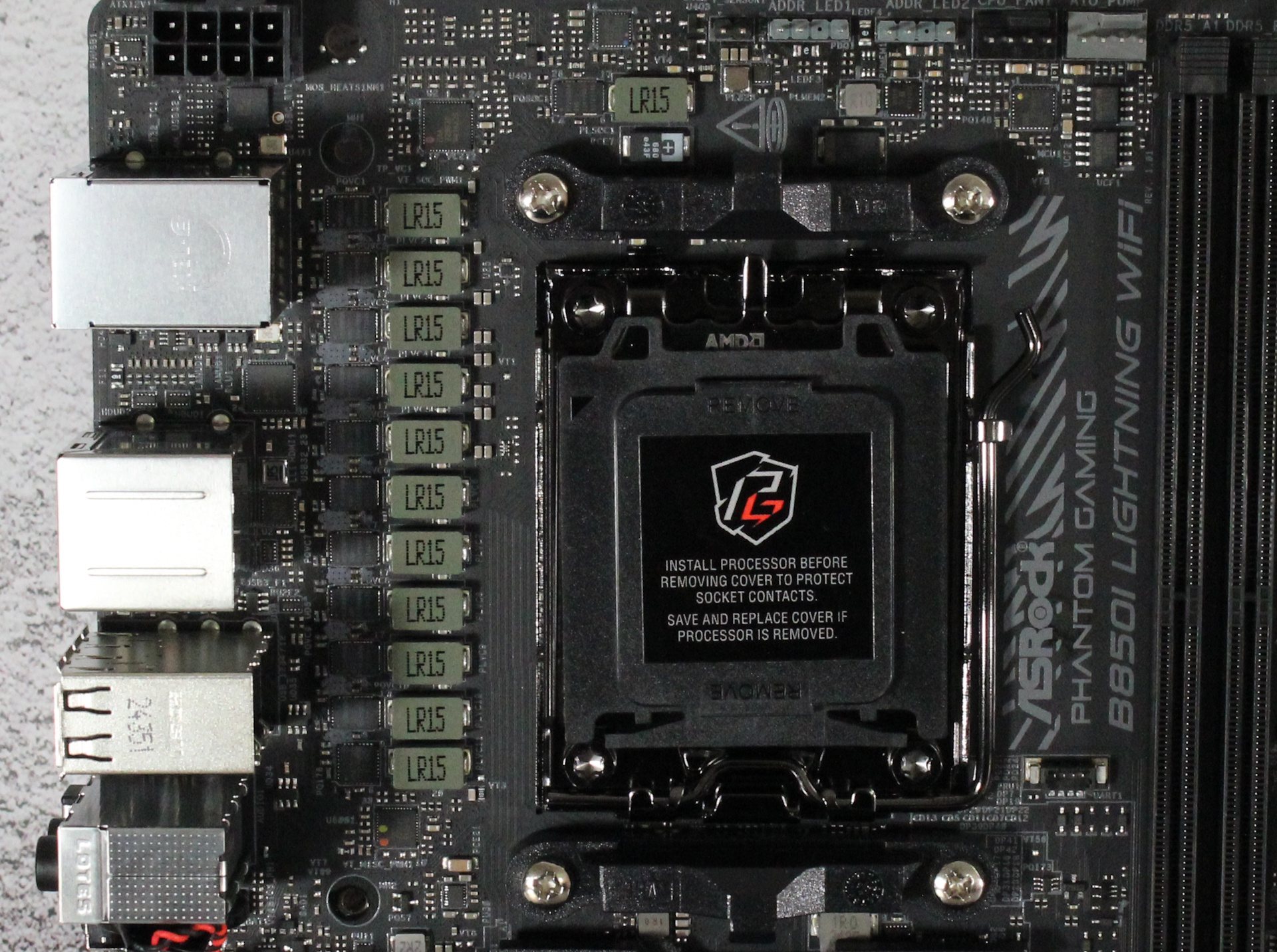
Twelve VRMs, 10 dedicated to the Vcore/processor, are only located on the left side (not across the top as on larger motherboards). Power moves from the 8-pin EPS connectors to the Renesas RAA 229620 PWM controller and then to the 10 Renesas R2209004 110A SPS MOSFETs. The processor has 1,100A available, which is plenty, even for flagship-class processors and overclocking.

The main feature across the bottom of the board is the sole PCIe 5.0 x16 slot. There are no EZ latches; it is just the traditional latch you have to push and unlock. THis is expected on such a small and low-priced board. Above the PCIe slot and below the heatsink is the B750 PROM21 chipset and the primary PCIe 5.0 x4 (128 Gbps) socket, M2_1. Our PCIe 5.0 drive did fine with its own heatsink, but I wonder how effective it is while cooling the chipset. Of course, this would be under longer sustained loads, but it's always worth considering if that’s your use case. The other M.2 socket, M2_2, is on the backside of the board and runs up to PCIe 4.0 x4 (64 Gbps) speeds. Both M.2 sockets fit 80mm or smaller modules.
Finally, the third 4-pin fan header, front panel audio, and speaker are on the left. Wedged between that is the Realtek ALC1220 audio codec. While not the latest and greatest, most users should be satisfied with the audio solution, and the accompanying Nahimic 3 software offers plenty of control over your audio experience.
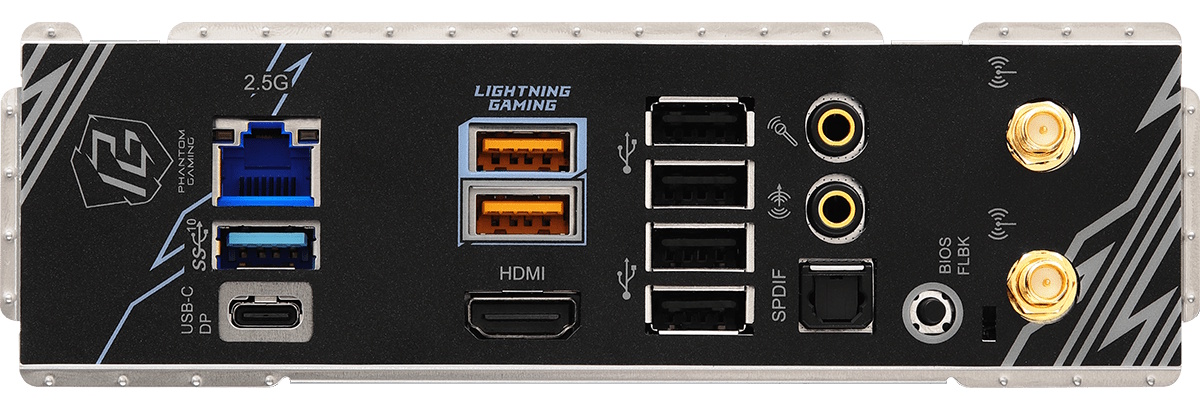
The all-important rear IO has enough connectivity, but I wouldn’t call it abundant. But again, it’s a budget board with more limited resources from the chipset to consider. That said, we have eight USB ports. Seven Type-A (2x 2.0, 2x 3.2 Gen1, 1x 3.2 Gen2) and one Type-C (3.2 Gen2). Seven USB ports could limit some users, and remember, there’s no room for expansion. The audio stack has a SPDIF optical port and mic-in/line-out 3.5mm jacks. The small button between that and the Wi-Fi 6E antenna connections is for the BIOS flashback feature. Last but not least is the Killer (Intel) E3100 2.5 GbE.
MORE: Best Motherboards
MORE: How To Choose A Motherboard
MORE: All Motherboard Content

Joe Shields is a staff writer at Tom’s Hardware. He reviews motherboards and PC components.
-
lmcnabney Your purchase links go to the A620I.Reply
Also, if it was mATX it would be a $140 board. That's a 50% premium for a small board that still only has 7 layers. -
logainofhades None of those cons are cons to me, really. If I were to rebuild in one of my ITX cases, this would be on my list of boards to consider.Reply -
HideOut While it sucks to have an older audio codec, the 1220 isnt horrible. Its far better than the 8xx crap some boards come with.Reply -
Notton IMO, in some ways, socket 754 was way ahead of it's time.Reply
AM5 mobos need to work with a 16-core, potentially even a 24 to 32-core down the line, and the VRMs are complete overkill for an 6 or 8-core.
Extra VRMs aren't free and neither is the space they occupy on an already cramped board.
Minisforum's BD795i / BD795M approach to this is better from a budget and I'm never going to upgrade the CPU or mobo perspective. All it really needs to be perfect is a mobile 8-core X3D chip with an iGPU and faster DDR5.
Instead, we get these so-called "budget" mITX mobos that have outlived their usefulness. -
Mopar_63 I think sometimes, with a gaming ITX board, to much emphasis is put in the wrong places.Reply
The B850I looks to be a great gaming board and at current prices easily the best option. Losing Wifi7 might matter if you spend all your time with large data transfers but for day to day use and gaming Wifi6 does a wonderful job. I see at the other end of my house connections speeds to 600mb and latency of around 20ms for internet connectivity which is more than enough for a great gaming, or everyday use experience. Adding Wifi 7 might add more bandwidth but except for downloading the games it does not really matter.
For audio, the AC1220 might not be the most current but it is a SOLID choice. If you need better audio, you're always better off going with a USB AMP/DAC instead of a newer motherboard codec.
Lack of USB 4? Again, who cares, the only time the high-speed USB comes into play is if you're using an external storage device. Even with a simple USB C I can max out an external SSD, no need for USB 4 yet. Speaking of that this board takes dings for having 4 USB 2.0 connections. However again, as a gamer this will not harm you. Keyboard, Mouse, AMP/DAC and Camera all work fine on USB 2.0 gaining nothing from the higher speed connections.
I do hate that we think of a $200 board as a budget option but if you're building a SFF Gaming rig this board is the best choice on the market of current generation boards. -
ocer9999 Reply
I think at this point is just the new normal and I dont even think companies are making much money, it's the cost of things gone up so much the last 4 years..qwertymac93 said:It blows my mind that over $200 is considered "budget" now.
But I agree I don't think USB 4.0 is relevant for the foreseeable future, I wouldn't say the B850i is a no go because of that.. -
2Be_or_Not2Be ASRock's Phantom Gaming mITX boards were usually ones that had the latest technology parts integrated onto the small mITX format, at a slightly cheaper price versus ones from MSI/Asus. It's why I usually purchased their boards. So now they've put the PG branding on this board, but without the associated latest-tech components (USB4, WiFi7, etc.). That, to me, is a bit of letdown for this series. So while I usually considered all of the latest from each board maker, now they lose a bit in comparison.Reply
Perhaps they'll release a "fully-loaded" mITX board with the PG moniker & the 870 chipset.
